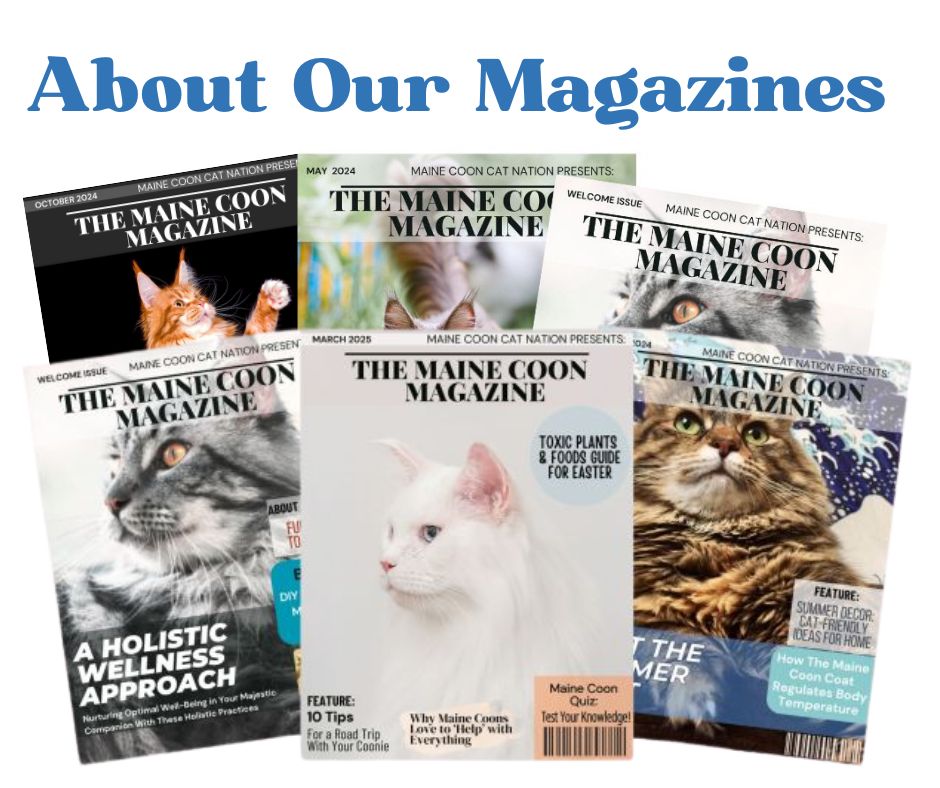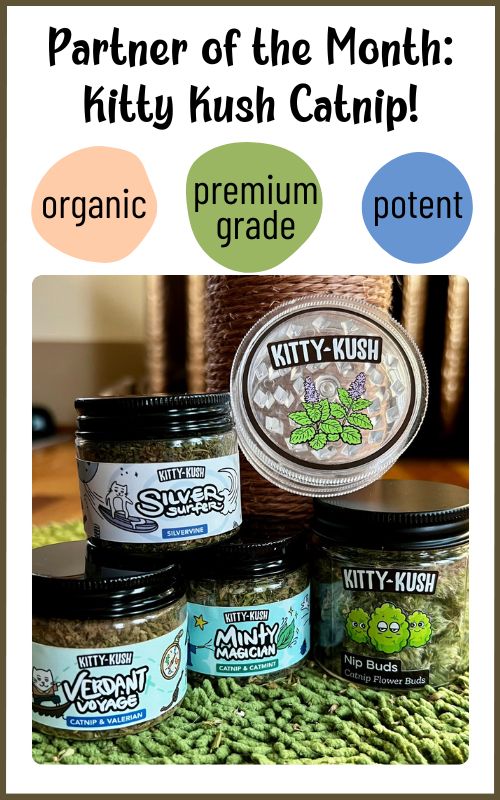- Home
- Maine Coon Personality
- Cat Sounds
Cat Sounds
Trills, Chirps, Hisses, Yowls and More
Have you ever noticed what a variety of cat sounds there are? I think we get so used to our pets that we sometime stop noticing all the interesting things about them.
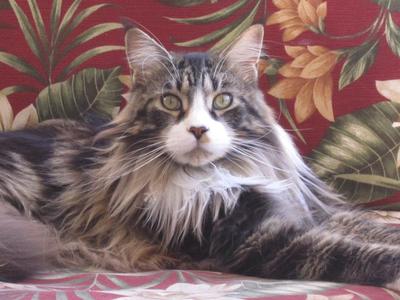
When felines want to communicate, they have a whole repertoire of cat sounds to use.
They can share their emotion, desires, feelings and more with a chirp, hiss, purr or of course, meow!
Also, different animals have different personalities, and some may be more or less vocal than average.
Usually, there is no particular reason for this – just like people have different temperaments, so do cats. One might be very vocal, with an assertive personality. Another may prefer to stay out of the limelight, and barely make a peep!
Have you ever noticed that your cat meows at you, but not (particularly) at other cats?
That’s because meowing is a language cats reserve mostly for humans! While they may use body language, purring, or chirps with their feline friends, meows are their way of communicating specifically with us.
Even more fascinating, cats tailor their meows to get our attention - using different pitches, tones, and lengths to express their needs or emotions.
A sharp, short meow might mean, “Feed me!” while a softer, drawn-out sound could be a request for cuddles.
Over time, cats learn what works best with their humans, essentially training us! It’s like having your own personal translator, proving just how clever our feline companions really are.
Happy Cat Sounds:
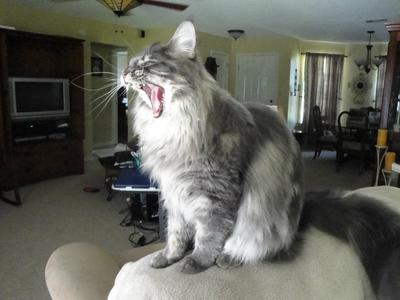 Michael has something to say!
Michael has something to say!Meowing
Have you ever noticed that your fur-friend has different meows? It's true. There is a difference between "hello," and "I want something," for example.
If you are very in tune with him or her, you may know the difference between "I'm hungry," "I want to play" or "Give me some loving!"
Purring
Purring in Maine Coons is usually reserved to express happiness, as we all know! When I was a child, and my cat purred, I always thought to myself: "S/He is completely content."
I still have that thought now, when one of my Maine Coons starts purring. They are very happy cats by nature, so there is a lot of purring.
If I were blindfolded, I could differentiate between the sound of Alice purring and Leo's motor. Alice has a more "hollow” sound, and her purr is short-lived.
Usually she purrs when she settles in to get comfortable. Then she hangs out quietly and happily. Leo, on the other hand, can purr (and knead, etc) for what seems like an endless time!
He can be heard through closed doors, across large spaces, and over the sound of the radio or television! Isn't it interesting that different cats have a unique purr sound? They seem to smile when this is going on, too.
There are other times that kitties turn on the motor, too, and some interesting facts about it.
Angry Or Upset Cat Sounds
It's not all fun and games when you are a house cat, apparently! There are dogs, children, and other things lurking in the shadows. Just kidding – most cats, Maine Coons included, get along great with dogs and kids.
But there are times when they think there is danger, and this is when you might hear hissing or growling.
Usually we think of hissing and growling as going together, and signaling fear and anger. Typically fear and anger seem to go hand in hand. But, they are actually separate.
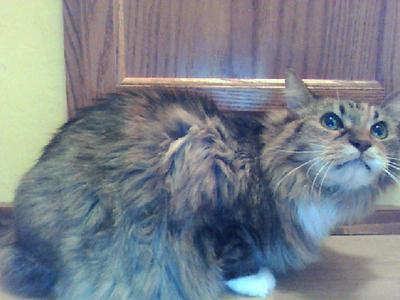 Pebbles is feeling nervous
Pebbles is feeling nervousWhen he is mad, but not fearful, this is when you are more likely to hear growling. A growling cat sounds like he's making a low rumble.
It's a warning that she's irritated about something, and it's best to leave her alone if possible.
You'll also see that she's not blinking, her eyes become slits, and she may be crouched down.
Hissing is a "last resort" before he may swipe out in fear. A scared cat will be puffed up, with ears back, and if that doesn't work hissing is next.
He bares his teeth, letting out a hiss that says, "I'm scared and I will lash out if something doesn't change."
Of course, any feline can be scared and mad, or quickly switch from one to the other, so that's why they seem to go hand in hand. And, it's not as scary as it sounds.
A cat is usually calmed down fairly easily by removing him from the situation, or distracting him. Or even calmly petting him and reassuring him. And of course, treats always help!
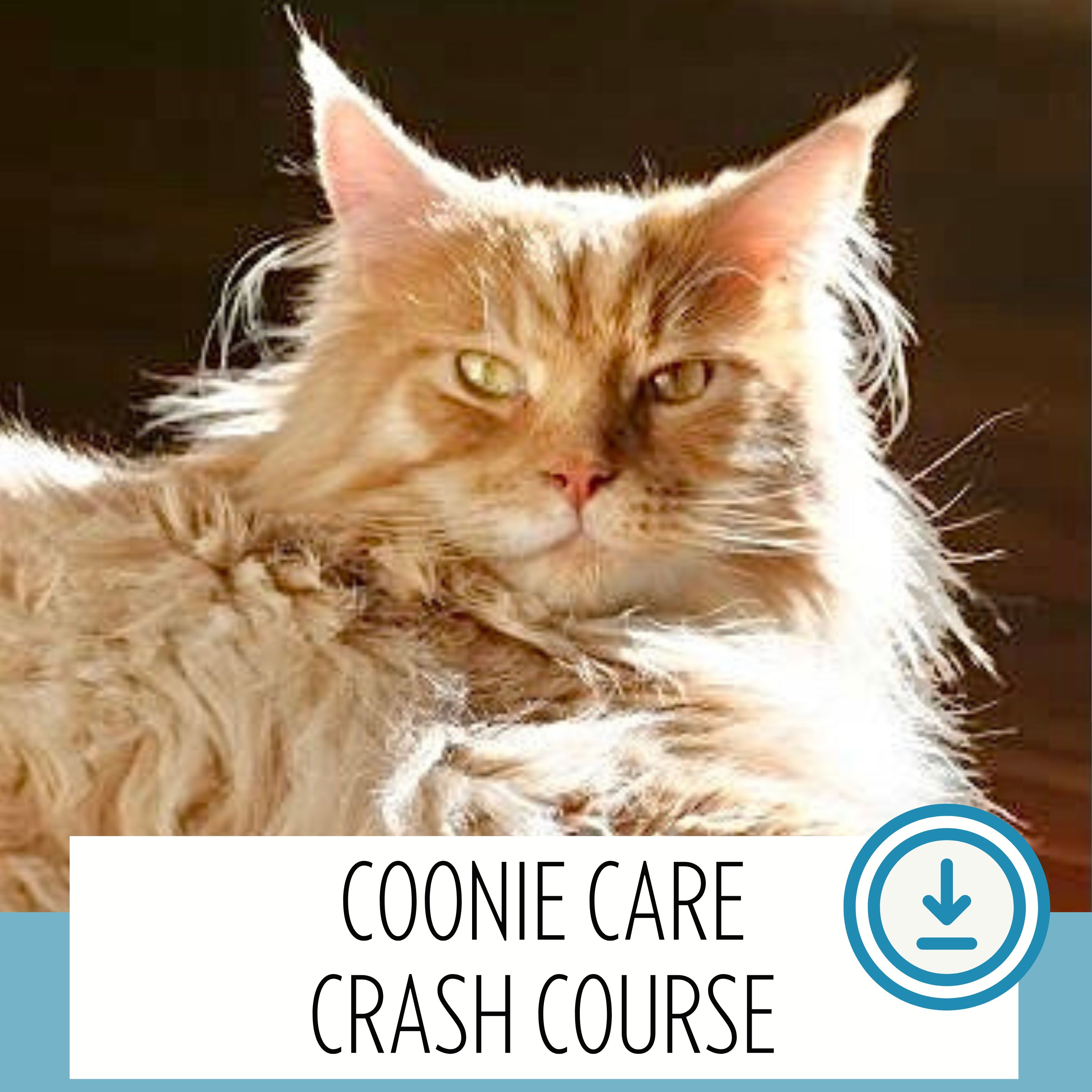
Other Cat Sounds:
Most of us have heard the yowl, and we don't appreciate hearing it during the wee hours of the morning, before the birds wake up!
So it won't surprise you to hear that this cat sound is reserved especially for getting your attention!
Many cats develop a habit of yowling when they want something, regardless of the hour! So don't give in and open a can of cat food at three o'clock in the morning unless you are willing to keep doing it!
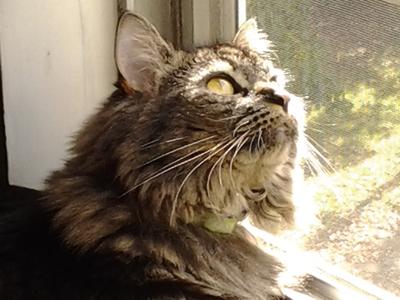 Church the Maine Coon looking outside
Church the Maine Coon looking outsideWhen your pet is looking out the window at birds or squirrels, this is when you are likely to hear chattering cat sounds!
Chattering sounds are so fun! You'll know it if you've heard it.
Chirping is a sweet, and funny. It is theorized that when a cat catches it's prey, it makes a series of quick bites to the neck. Young cats in the wild will chatter when they mimic this as they are learning from their mum.
And some people think their kitty is frustrated when s/he does this! I don't know about that, it usually just happens when they are caught up in the moment!
Chirping and Trilling
We saved the best cat sounds for last! Did you know that Maine Coons have a distinctive way of communicating with their owners?
Unlike typical cat meows, this breed often uses a unique chirping sound that is both charming and endearing. This vocalization, a mix between a trill and a chirp, is usually a sign of excitement, curiosity, or a way to get your attention.
Many Maine Coon owners report that their cats use this chirping sound when they are observing birds outside the window or when they are feeling playful and interactive.
Susan in Colorado shares: "Oh my, Chester meows like you wouldn't believe when he wants something and chirps and trills every time you pass by him, even in the dark."
It's a delightful reminder of their wild ancestry and natural hunting instincts. This chirp can also be a greeting, a way of saying "hello" or "follow me" as they lead you to their food bowl or a favorite toy.
The chirping sound is one of the many ways these cats showcase their friendly and social nature.
It helps create a stronger bond between you and your furry friend, making interactions even more special. So, next time your Coonie chirps at you, think of it as your own personal language together!
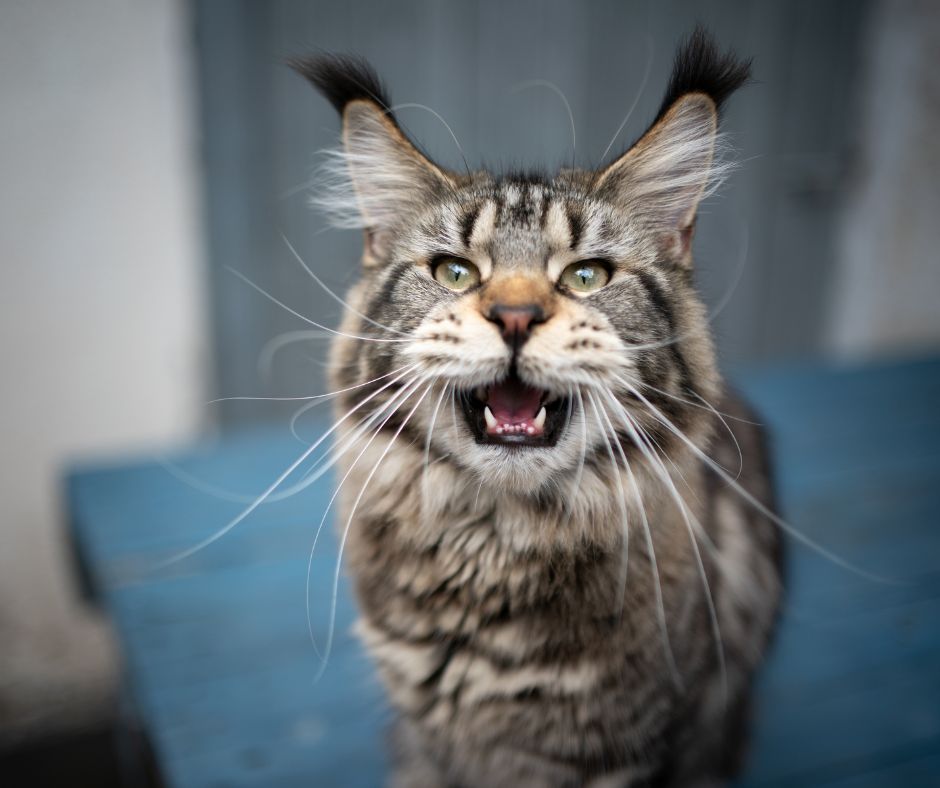 Chatty Coonie
Chatty CoonieMaine Coon cats are known for their chirping, and especially for their trilling. These two sounds are kind of like a cross between a meow and a purr.
It's hard to describe in words! A chirp, as it's name implies, is shorter, and sounds very much like a greeting. A trill is longer, and such a sweet sound.Such a sweet, delicate and endearing sound for such a massive cat to make!
"So, If My Cat Trills Is It A Sign That S/He Is A Maine Coon?"
No, any cat can trill. It's just that Maine Coons, as a breed, tend to do it more often. Think of it as their "signature sound."
If you have a Maine Coon, you will be hearing some trilling. That doesn't mean that every cat that trills a lot is a Maine Coon, though!
Maine Coon cats are known to talk to their people. So, listen to the different cat sounds they make, and see if you can connect on a deeper level.
It's like you have your own special language, just you and your fluffy buddy!
« Back to Maine Coon Personality
Recent Articles
-
Memory Lane Month Begins!
Apr 15, 25 10:22 PM
We're thrilled to start our "Memory Lane Month" event by visiting some cherished moments from our community! We're in the process of restoring meaningful community stories like this one, to preserve t… -
Will a Maine Coon Protect Its Owner From Danger or an Intruder?
Apr 09, 25 10:41 PM
Plenty of people are curious: Will a Maine Coon protect its owner if something happens? Let’s talk about what this means, and what kind of protector a Coonie is. -
9 Types of Maine Coon Cats and How to Tell Them Apart
Apr 09, 25 03:58 PM
When people say "types of Maine Coon cats," they're usually talking about color. But as Coonie lovers know, there’s a lot more to it than that! From wild-looking European lines to polydactyl paws and…
